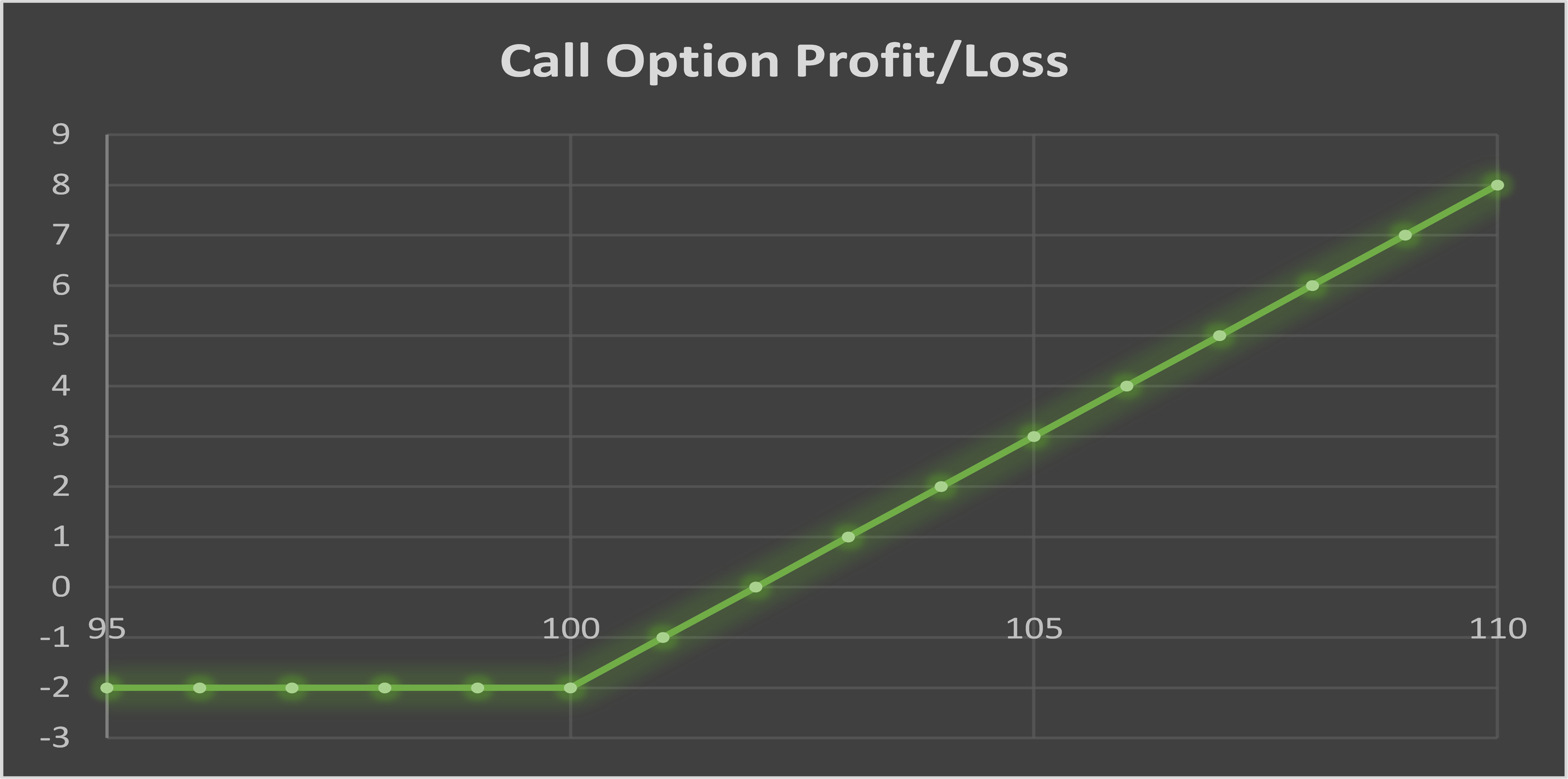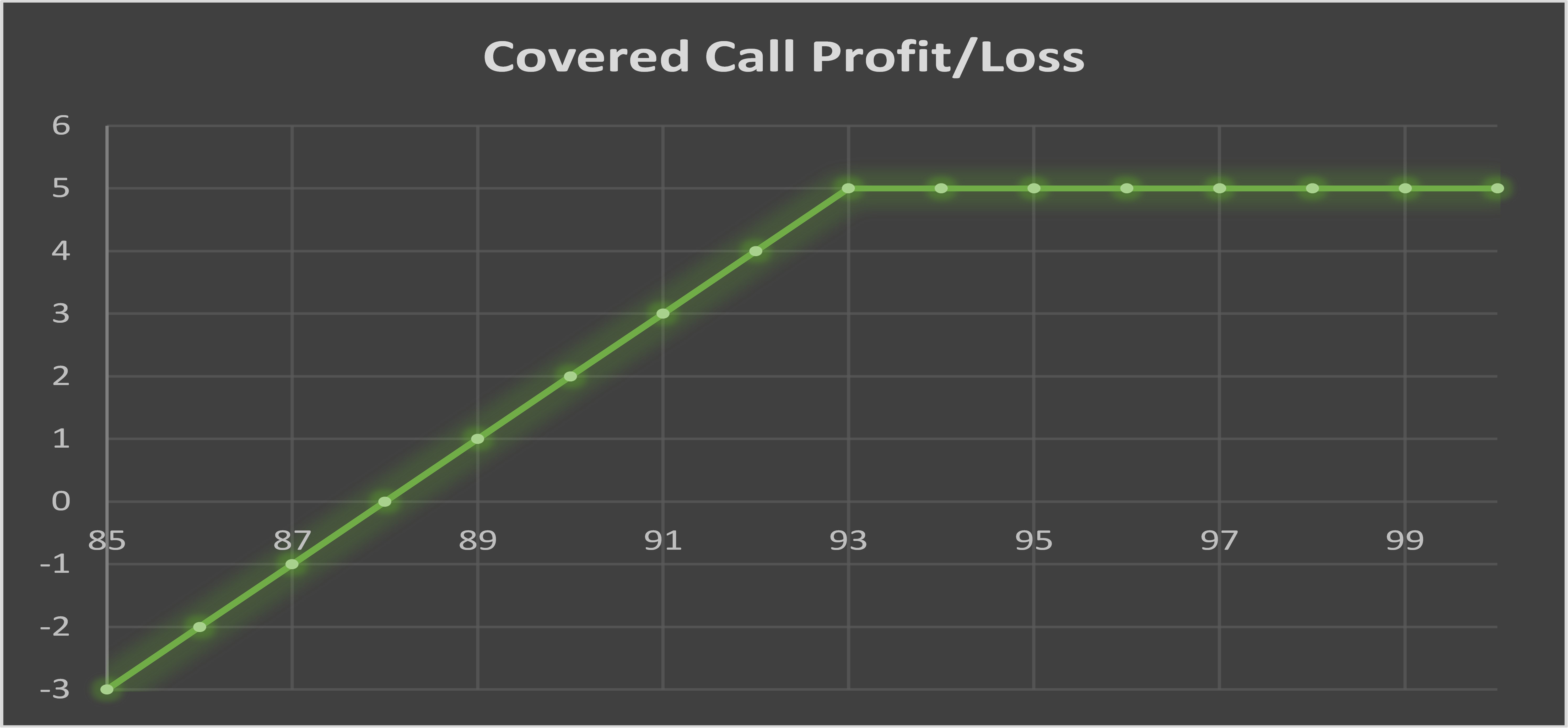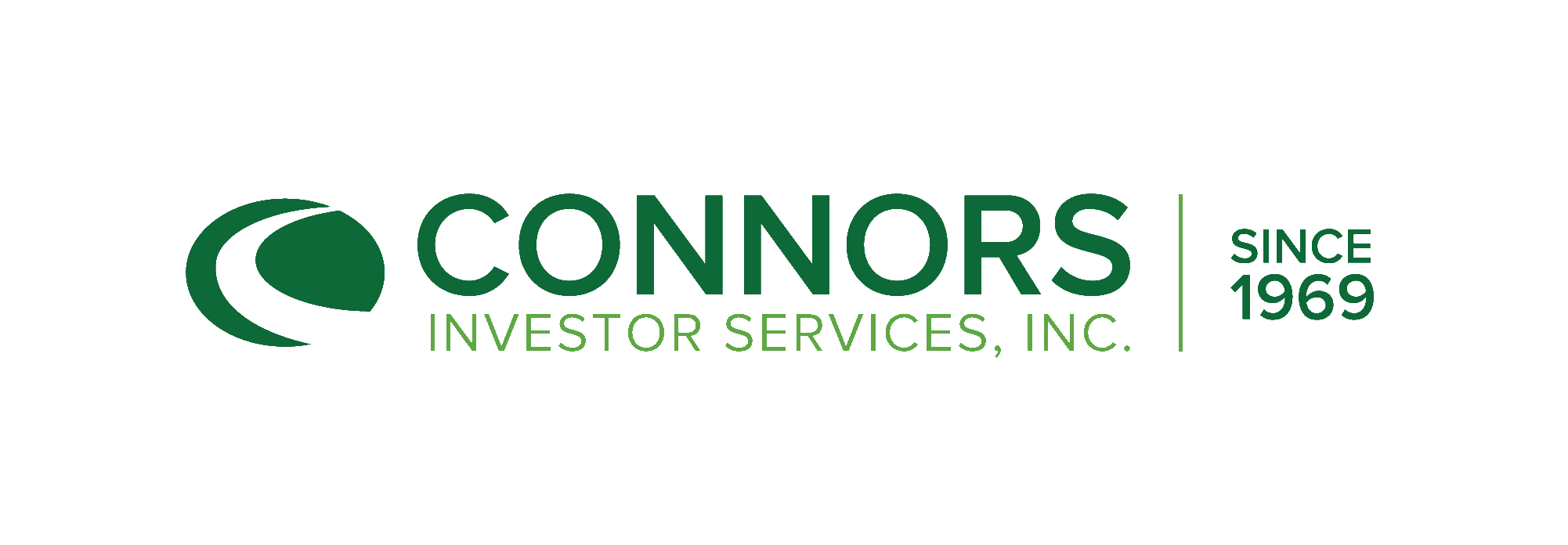Covered Call Fundamentals
by Robert Cagliola, CFA and Robert Hahn, CFA, on August 10, 2023
What is a Call Option?
- A call option gives the holder the right, but not the obligation, to buy a stock at a designated price (strike price) up to a particular date (expiration date).
- The seller of the option collects premium from its sale. This premium is based on:
- where the underlying stock trades relative to the strike price
- the volatility of the underlying stock
- the time to expiration.
- There are two possible outcomes:
- The stock goes above the strike price and the holder exercises their right to purchase the shares at the agreed upon price.
- The stock stays below the strike price and the option expires worthless.
- The seller of the call option keeps the option premium regardless of whether the option is exercised

- The chart above shows the payouts for purchasing a call option on a stock with a $100 strike price for $2.
- The break even stock price for the trade is at $102.
- The holder of the call option earns $1 for each $1 dollar gain in the underlying stock above the strike price.
- If the stock remains below $100 at expiration, the holder of the option loses the $2 premium.
Why Sell Call Options?
- Premium
- The primary reason to sell or write call options is to collect option premium.
- As noted previously the seller of the call option keeps the option premium regardless of whether the option is exercised.
- Reduce Volatility & Increase Income
- This premium acts as a buffer reducing volatility in exchange for forgoing some potential upside.
- Call premiums increase income on top of dividends from the underlying portfolio.
Covered Call Overview
A covered call is a combination of owning shares of a stock and selling (or writing) call options against those shares.

A call option is a contract that gives the buyer of the option the right (but not the obligation) to buy 100 shares of the underlying stock at the strike price any time before the expiration date.
If the seller of a call option owns the underlying shares, the option is considered "covered" due to the ability to deliver the shares without purchasing them in the open market at unknown - and possibly higher future prices.
Call Writing
- Each option contract represents 100 shares of a stock.
- Partial writing allows for both collection of premium income as well as the potential for additional upside in the underlying stock in the event that shares are called away.
For example, if you own 900 shares of a stock, and we decide to write (6) total contracts. We would collect premium from writing the six call options and 600 of the 900 shares would be covered. In the event that the stock was called away, the 300 unwritten shares would participate in any additional upside in the stock.
Selling/Writing Covered Calls
3 Possible Outcomes When Selling a Covered Call
Outcome #1 - If the price of the stock is less than the strike price at expiration, then the call expires worthless, and you will keep the underlying stock in addition to the premium received for selling the call option.
Outcome #2 - If the price of the stock is above the strike price at expiration, then the call option can be assigned and you will have to deliver 100 shares of the stock at the agreed upon “strike” price.
Outcome #3 - If the price of the stock is above the strike price and you want to keep the stock, then you can buy back the option and sell another call often adding additional premium. Losses on option buybacks can be used versus year to date taxable gains.
Covered Call Payout Diagram

- In the chart above the seller writes a $95 call option on the stock for $2 which is currently trading at $90.
- Above $95, the stock gets called away, but the seller keeps the $2 of premium plus the additional $5 of upside in the stock.
- Breakeven is $88, giving the seller a $2 buffer in the event the stock trades down
Connors Covered Call Investment Process
This strategy is designed to maximize risk-adjusted returns by combining the long-term appreciation potential of stocks with lower volatility and income generation through covered call option writing. The foundation of this approach is a core portfolio of carefully selected large-cap equities. We sell covered call options against these underlying stocks in an effort to generate additional income. Our emphasis is on fundamental quality, strong profitability, low debt levels and proven management. While this strategy reduces upside potential in very strong markets, it brings in an immediate cash return and generally reduces portfolio volatility.

Portfolio Construction Process
What do we look for in a stock?
Investment Process
- Industry leadership/competitive advantage
- Positive earnings and revenue growth
- High return on equity
- Expanding profit margins
- Strong balance sheet
- Historic and projected cash flow growth
- Reasonable valuation
When do we sell a stock?
Reducing/Selling Position
- Fundamental deterioration
- Investment thesis altered
- Technical breakdown
- Ethical issues
- Price target reached
Summary of Portfolio Construction
- Research and carefully select a core portfolio of up to 50 individual stocks
- This includes both growth and value and the mix can vary based on market outlook
- Represent at least 9 out of 11 of the S&P 500® Index sectors
- Target portfolio yield greater than that of S&P 500®
- Actively sell call options against underlying stocks to generate income and reduce volatility
- Sell/write calls against a range of 25%‐75% of the total shares
- Each write is a separate investment decision based on outlook of underlying stock
- Calls may be written closer to the current price if the stock is extended
- May wait to write or roll an option for an oversold stock
- Annual income goal with dividends and net call premiums is 5%‐7%
- Average call written 3%-10% out of the money to allow upside in stock
Connors Strategy Attributes
- Professional management with a long history of managing the strategy through multiple market cycles
- First and foremost, we build a diversified portfolio of up to 50 stocks with a quality focus and target a dividend yield greater than S&P 500
- Reduced volatility and increased cash flow from call premiums
- Enhanced risk/return, performs well in down, flat, and modestly up markets
- Can reduce upside potential in strong markets
- Strategy is time intensive with fundamental research on underlying positions and each option write is done in conjunction with the outlook for the underlying stock
Important Disclosures
Connors Investor Services, Inc. (“Connors”) is an SEC registered investment advisor located in Wyomissing, Pennsylvania. Connors may only transact business in those states in which it is registered, or qualifies for an exemption or exclusion from registration requirements. Connors’ presentations are limited to the dissemination of general information pertaining to its advisory services, together with access to additional investment-related information, publications, and links. Accordingly, the information presented should not be construed by any consumer and/or prospective client as Connors’ solicitation to effect, or attempt to effect transactions in securities, or the rendering of personalized investment advice for compensation. Any subsequent, direct communication by Connors with a prospective client shall be conducted by a representative that is either registered or qualifies for an exemption or exclusion from registration in the state where the prospective client resides. For information pertaining to the registration status of Connors, please contact the SEC or the state securities regulators for those states in which Connors maintains a notice filing. A copy of Connors’ current written disclosure statement discussing Connors’ business operations, services, and fees is available from Connors upon written request. Connors does not make any representations or warranties as to the accuracy, timeliness, suitability, completeness, or relevance of any information prepared by any unaffiliated third party. All such information is provided solely for convenience purposes only and all users thereof should be guided accordingly.
Past performance may not be indicative of future results. Different types of investments involve varying degrees of risk. Investors should understand the particular risks associated with options prior to engaging in any covered call strategy. These risks are more fully described in the Options Clearing Corporation Publication, “Characteristics and Risks of Standardized Option Trading” which can be found at: http://www.optionsclearing.com/components/docs/riskstoc.pdf. Hard copies may be ordered by calling 1-888-678-4667 or writing OCC, 1 North Wacker Drive, Suite 500 Chicago, Il 60606. Therefore, it should not be assumed that future performance of any specific investment or investment strategy (including the investments and/or investment strategies recommended and/or undertaken by Connors Investor Services, Inc.), or any non-investment related content, will be profitable, equal any corresponding indicated historical performance level(s), be suitable for your portfolio or individual situation, or prove successful. Connors is neither a law firm, nor a certified public accounting firm, and no portion of its services should be construed as legal or accounting advice. Moreover, you should not assume that any discussion or information contained in this presentation serves as the receipt of, or as a substitute for, personalized investment advice from Connors.
Due to various factors, including changing market conditions and/or applicable laws, the content may no longer be reflective of current opinions or positions. Moreover, you should not assume that any discussion or information contained in this presentation serves as the receipt of, or as a substitute for, personalized investment advice from Connors Investor Services, Inc. (CIS). To the extent that a reader has any questions regarding the applicability of any specific issue discussed above to his/her individual situation, he/she is encouraged to consult with the professional advisor of his/her choosing. Connors Investor Services, Inc. is neither a law firm nor a certified public accounting firm and no portion of the factsheet content should be construed as legal or accounting advice. If you are a Connors Investor Services, Inc. client, please remember to contact Connors Investor Services, Inc., in writing, if there are any changes in your personal/financial situation or investment objectives for the purpose of reviewing/evaluating/revising our previous recommendations and/or services. No current or prospective client should assume that future performance will be profitable, equal the performance results reflected, or equal any corresponding historical benchmark index and/or combination thereof.
Options involve risk and are not suitable for all investors. Prior to buying or selling an option, a person must receive a copy of Characteristics and Risks of Standardized Options (the “ODD”). The ODD and supporting documentation for any claims, comparisons, recommendations, statistics or other technical data in these materials are available by calling 1-888-OPTIONS, or contacting Cboe at www.Cboe.com/contact. Futures trading is not suitable for all investors, and involves the risk of loss. The risk of loss in futures can be substantial. You should, therefore, carefully consider whether such trading is suitable for you in light of your circumstances and financial resources.
Writing covered calls limits the upside potential of the underlying security. The value of an option position will reflect, among other things, the current market value of the underlying investment, the time remaining until expiration, the relationship of the exercise price to the market price of the underlying investment and general market conditions. Options that expire unexercised have no value. By writing (selling) a call option and receiving a premium, the writer becomes obligated during the term of the option to deliver securities underlying the option at the exercise price if the option is exercised or, if an index option, a cash settlement would apply.
The information in these materials is provided solely for general education and information purposes and therefore should not be considered complete, precise, or current. Many of the matters discussed are subject to detailed rules, regulations, and statutory provisions which should be referred to for additional detail and are subject to changes that may not be reflected in these materials. No statement within this material should be construed as a recommendation to buy or sell a security or to provide investment advice.






